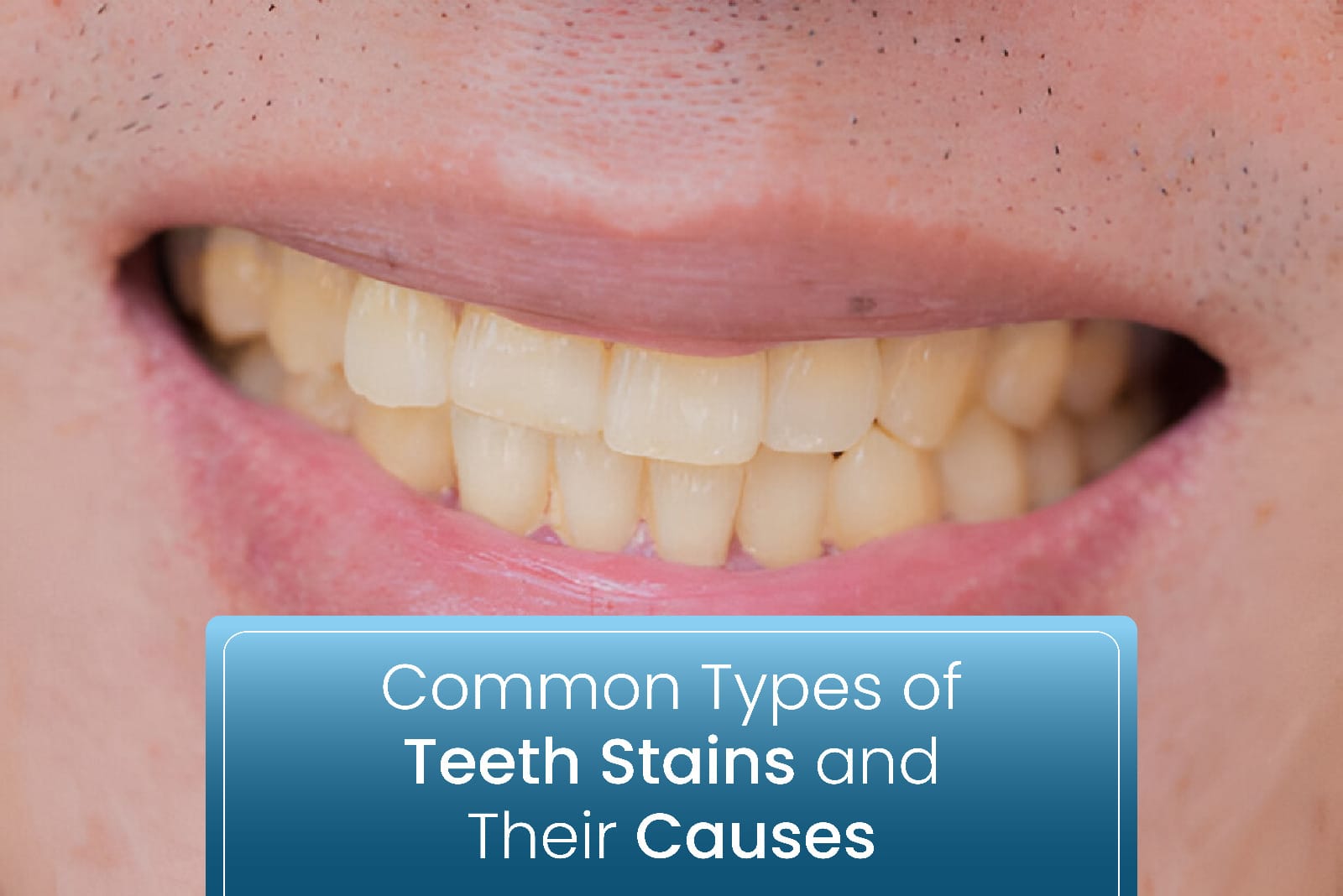Our confidence and general well-being are greatly influenced by the appearance and condition of our teeth. Tooth stains are one of the most common problems experienced by many people. Preventing and treating teeth stains starts with understanding their different types and causes. In this article, we will take a detailed look at various kinds of teeth stains and what causes them.
- Extrinsic Stains
The outermost part of a tooth called the enamel is where extrinsic stains occur. These stains are usually caused by external factors such as:
Food and Drinks: Certain beverages like coffee, tea, and red wine, as well as foods with intense color pigments (like berries), can lead to stained teeth over time.
Tobacco Use: Smoking or chewing tobacco products can cause stubborn extrinsic stains due to the tar and nicotine content in them.
Poor oral hygiene: Failure to brush or floss properly can result in surface stains since plaque and tartar might accumulate on your teeth.
- Intrinsic Stains
Intrinsic discoloration is staining that happens within the tooth structure below the enamel, which is hard to bleach out. The causes of intrinsic discoloration include:
Age: With time, our enamel wears away, naturally exposing the yellowish dentin below, making our teeth more discoloured.
Medications: Some drugs, particularly tetracycline antibiotics, when taken during tooth development (between childhood and adolescence), may cause intrinsic staining of the teeth.
Dental Trauma: When a tooth is injured, it responds by producing more dentin, which makes it darker than the enamel. Therefore, causing the color of the tooth to change.
- Combined Stains
Some cases may involve both intrinsic and extrinsic factors, making them harder to treat. Causes of combined discoloration are:
Genetics: The thickness and color of the enamel can be influenced by genetic predisposition, affecting the susceptibility to staining.
Fluorosis: Too much exposure to fluoride during tooth development may lead to dental fluorosis, which manifests as white spots or lines on teeth.
Prevention and Treatment
Good oral hygiene habits, coupled with making wise lifestyle choices, are the best ways to avoid tooth stains.
Regular Brushing and Flossing: Brushing at least twice a day and flossing once a day can help you prevent extrinsic strains by removing plaque.
Dietary Modifications: Limiting the intake of stain-causing foods and drinks can prevent extrinsic discoloration. Drinking water after having these meals also removes color deposits.
Professional Cleanings: Consistent visits to the dentist for professional cleaning will get rid of stubborn plaque that causes noticeable staining even before it is seen.
Understanding the types and causes of tooth stains is crucial for maintaining a bright and healthy smile. To effectively prevent tooth discoloration, we need to develop good oral hygiene routines and make informed decisions regarding our lifestyles, thereby preventing it from occurring at all.

